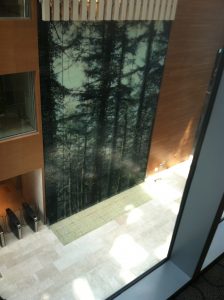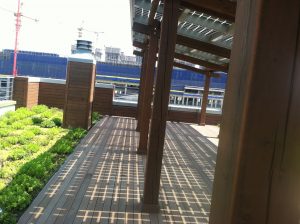Green Building in South Korea
I’m back from a month-long sojourn to South Korea in search of advancements in Green Building. The purpose of the Rotary International-funded trip was to see built environment sustainability from the perspective of South Korea. My major take-away from the trip: the U.S. as a country has a lot of catching up to do.
It’s easy to understand why the States are so far behind when you’re standing at Korean Parliament talking to lawmakers and business leaders on both sides of the isle about their agreement on climate change. The fact is that Korea has their stuff figured out when it comes to anthropogenic climate change. State funded television commercials encourage energy saving behavior and waste reduction techniques in the home. Corporations devote billions to green tech R&D and a fully integrated smart grid seems like it’s right around the corner. And policy makers seem to have successfully implemented a strategy to bring all residential buildings to net zero energy and emissions by 2025 and there’s seemingly no opposition to any of it!
I think that a lot of this can be attributed to the basic building blocks and structure of the Korean corporate culture. The country is basically made up of 15 massive corporations that were the product of “The Hero of Korea”, Park, Chung-hee’s rule up until the late 1980s. Please understand that this is just me retelling the info as it was told to me over a bottle of soju and a couple cans of Cass beer. As I’m piecing the history of Korea together, I’ve notice that this guy’s reign coincides with the industrial revolution and the infancy of some of Korea’s biggest conglomerates. If this is true, he could have had a great deal to do with the creation of giants like Samsung and Hyundai. He could have fostered the very companies that are now threatening to take over not only Korea’s large business sector like real estate development and information technologies, but small and medium size ones as well. That’s right, Samsung owns a bakery in Seoul. With all of the resources backing this little bakery, there is little chance for any mom and pop shop to thrive nor survive in this kind of climate. Because of this fact, the 15 biggest companies in Korea have been “banned” from entering the small and medium-size business markets.

SK Chemical’s Loby Waterfall
While the size and scope of these giants is staggering and a little unnerving, it also means great things for sustainability in the country. If, like in the U.S., you have to convince hundreds of large, primarily Republican run, corporations that they should become more environmentally friendly, it would be safe to say you’ve got a pretty big task a head of you. On the other hand, if you have only 15 major companies that are all family owned in a country where the environment is not a politicized or polarizing issue, that makes your job a lot easier. Korea is just such a place. A staunchly patriarchal society, Korean companies make no qualms about using nepotism as a business strategy. Most, if not all, of the biggest 15 companies in Korea are family owned and operated; Samsung, Hyundai, LG and Lotte included. And all of those companies are competing with each other to be the first to patent, produce or market the next green technology. With this type of competition, coupled with policies mandating change, it’s no wonder there are mindboggling advancements in sustainable tech.

Green Home Plus’ Rooftop Garden
The corporate climate isn’t the only thing propelling Korea forward in their quest for sustainability. The culture of the Korean people is also a really big influence on their built environment. Namely, Korea puts much more emphasis on things that, in the U.S., typically take a back seat to return on investment or payback period. Things like human health and a connection to the natural environment are understood as intrinsically valuable and are more or less a given on major building projects. Companies like POSCO Steel are more than happy to brag about the $2 million they spend each year on landscaping at one of their facilities and at SK Chemical’s headquarters, a 4-5 story mural of a forest lines the walls of the loby partially obscured only by a waterfall meant to cool the space and help recirculate air. Many of the places we visited boasted rooftop gardens all of which were accessible by employees. The issue we have here with our rooftop gardens is that, while they are great at promoting biodiversity and insulating from heat loss, they are often off limits for building occupants unless they are on a tour.

SK Chemical’s Rooftop Garden
As a related side note: I’ve been on just about all of the rooftop gardens in Pittsburgh and at every one, I’ve heard the tour guide say something about their fear of letting building occupants in to the garden because they will likely not treat the space well and do things like walk on plants or leave cigarette butts laying around. From what I saw in South Korea, that would never be a problem and I think that is also a testament to their connection with nature, even in the built environment.
So all in all the relationship that South Korea has with their buildings, infrastructure, and environment seems to be quite a bit different than what we experience here in the States. A general agreement on climate change, a corporate landscape that fosters green R&D, and a culture that sees the aesthetic and intrinsic value of nature have all lead to a country that is now at the forefront of sustainability in the built environment.

